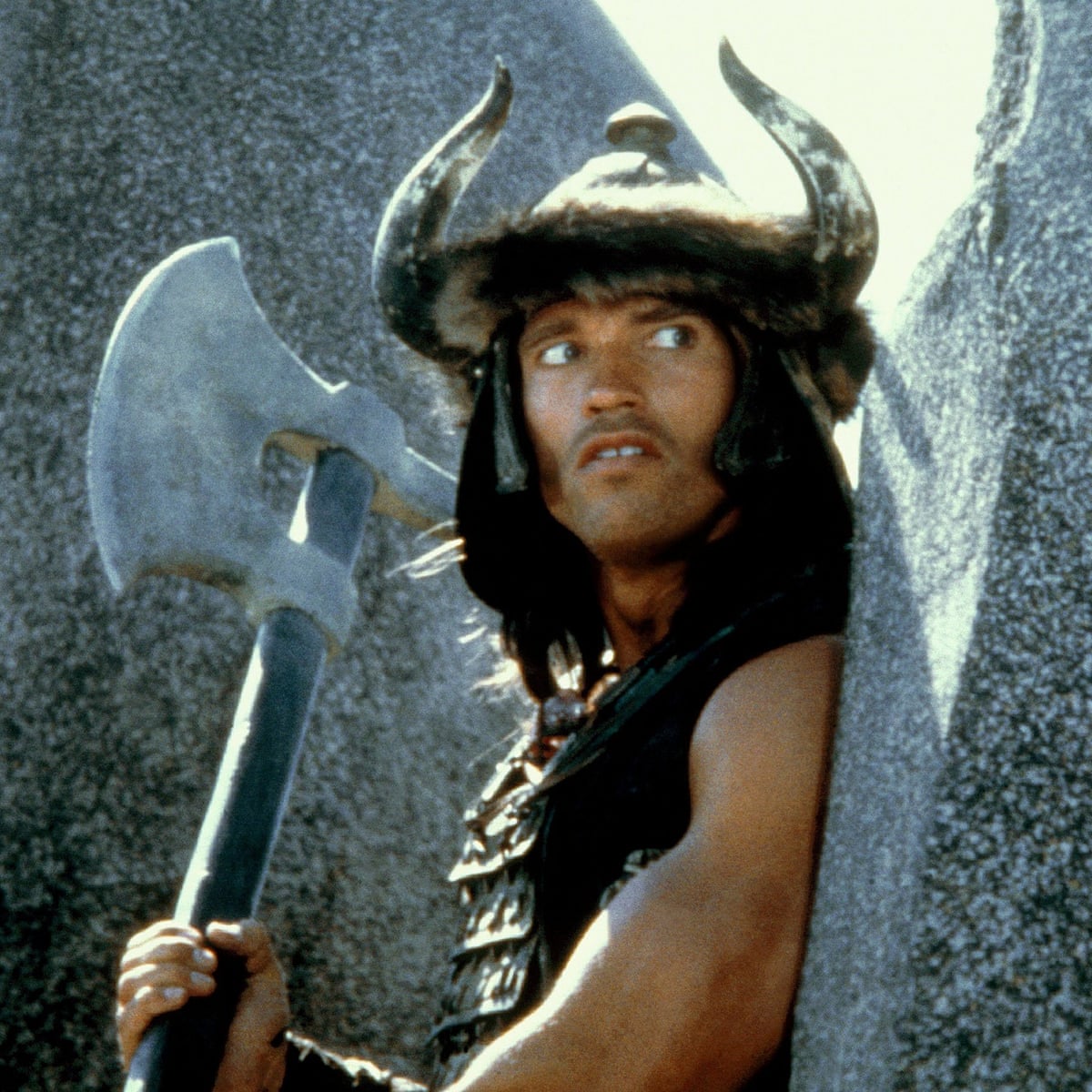cormack12
Gold Member
Source: https://news.blizzard.com/en-us/diablo4/23665024/diablo-iv-quarterly-update-june-2021
...tons more at link (too much to copy/paste)
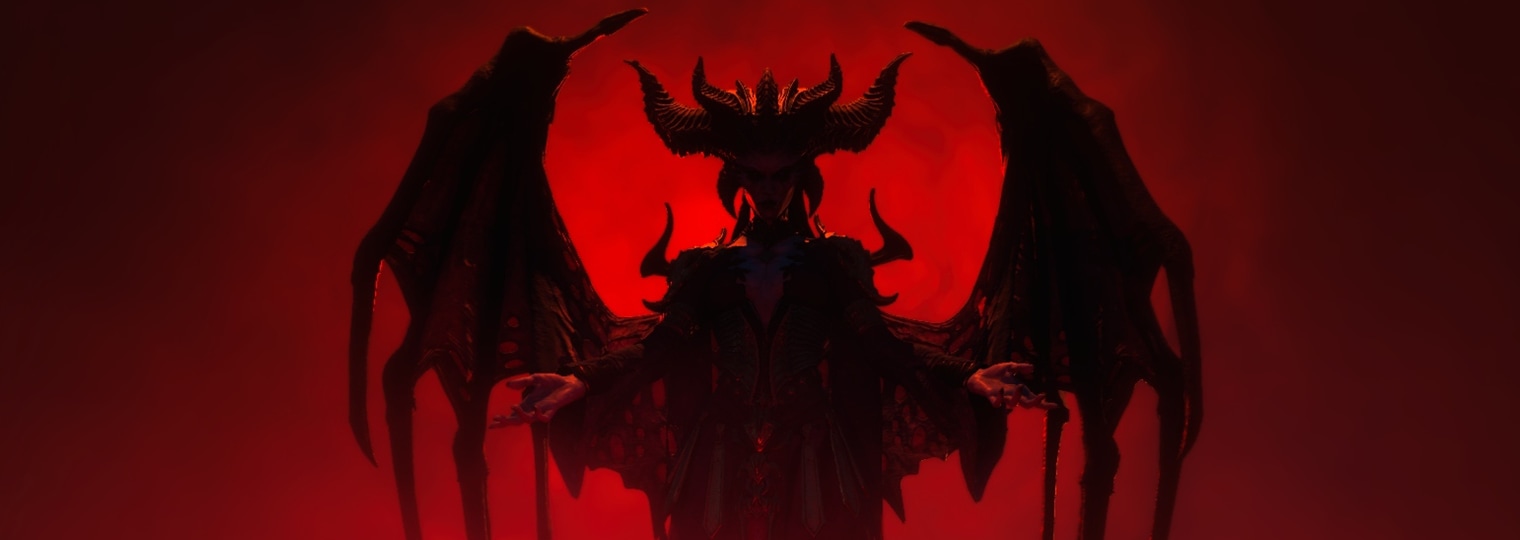
As we transition back to a blog format, we will continue to spotlight different aspects of development. Today we're going to be focusing on Diablo IV character art—player characters, monsters, and allies.
Art is a critical part of what makes Diablo, well... Diablo. Our signature randomized dungeons would not feel like Diablo without the ominous lighting setting the mood as players uncover horrifying details around every dark corner. Combat only feels visceral thanks to carefully crafted animations and visual effects that make spells and abilities sing. And while stats might make or break an item, we often can't wait to get our hands on a piece of gear purely because of how incredible it looks.
Character art is equally important as it encompasses two of Diablo's key elements: classes and monsters. The look and feel of the classes has always been one of Diablo's secret ingredients, each class instantly recognizable and imbued with a strong and unique personality. Diablo IV offers players more customization options than ever in a Diablo game, which makes achieving that result more challenging, but the outcome is well worth it. Your Barbarian is different from anyone else's but still feels undeniably like a Barbarian. With monsters, the focus has been on creating new foes and updating classics drawn from the pantheon of atrocities in our previous games, while using new processes and technology to their fullest.

our goal was to make the characters in Diablo IV look as artistic and as hand-crafted as possible using the latest tools and techniques. Over time, our ambitions around what we thought we could achieve evolved and really solidified into what you see today. We wanted to use the latest tools and techniques, but we did have a concern about leaning into 'realism' in a way that wouldn't have that hand-crafted feeling we felt was fundamental to a Blizzard game. We didn't want the characters to feel procedural or generic because of these processes. We also embraced realism in terms of materials and character appearance. I think the touchpoint being the amazing pre-rendered look from the Diablo III cinematics. We loved those and it felt like a strong foundation to build upon in regards to the characters and achieving that warm quality that came through in the cinematics but in a real-time game environment.
That singular focus and commitment to quality led us down a very long, winding, and challenging path to where we are today. The challenges required us to completely rebuild our rendering engine and authoring tools. We needed to assemble a world-class character team comprised of artists, tools engineers, rigging specialists, lighting and surfacing experts. This was a complete overhaul.
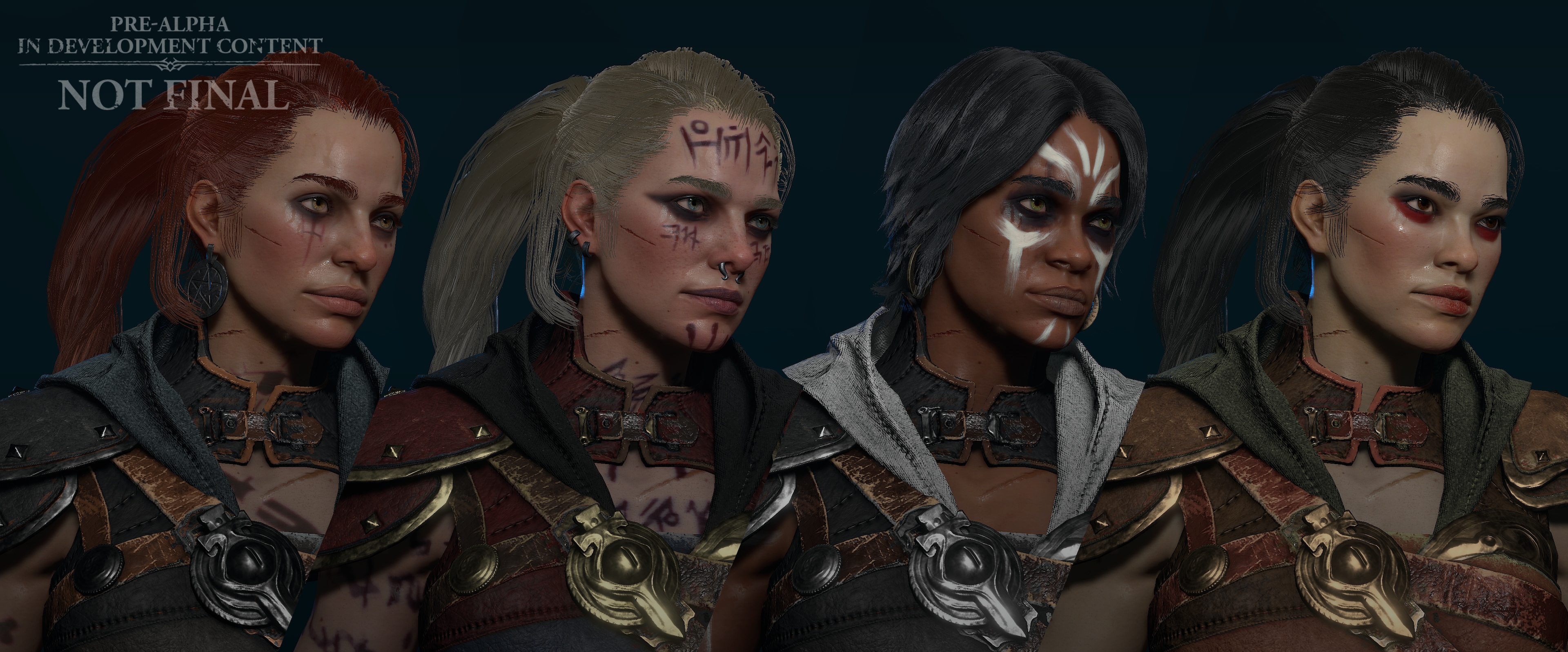
We made massive improvements to the level of detail, the surfacing of complex materials like skin, cloth simulation, hair, fur, metal, even down to the details of the highlights of the eyes and rivulets of perspiration. We built a robust character customization system that is entirely new to Diablo and it was a daunting amount of technical character work. These solutions had to work not just for a single character, but for hundreds of componentized armor sets, different body types, dozens of unique personas, and completely unique art for five distinct classes (to start). This was an entirely new challenge for our team to tackle.
One of the benefits of the investments we've made in our character art development pipeline is that now most of our story cutscenes will be rendered in our engine using the game models. In previous Diablo games, the high fidelity cinematic story moments were all pre-rendered. We will still have those amazing cinematic moments from Blizzard Animation, but now we also have cinematic moments that feature your character up close, rendered in our game engine.
Diablo IV has more in-depth customization for your characters than we've had in any previous Diablo games. You will be able to change the face of your character, the hairstyle, the facial hair (beards and eyebrows), and add jewelry (nose piercing or earrings), makeup, and body markings such as tattoos or body paint. You will also be able to change the color values of your character's skin, eyes, hair/facial hair, and body markings. Some elements will be class specific, to support the classes' unique backgrounds, but many will be shared between classes allowing more possibilities to mix and match.
Each part of the armor can be dyed, including the helmet, chest, gloves, legs, and boots. You can dye each piece with a different color palette if you choose, or apply the same palette to all of them.
This system was challenging to implement because materials such as metal do not allow themselves to be dyed with inappropriate colors when they follow PBR rules. To address this, we added data to our armor that identifies specific material types and tells the dye system what color goes on what material, such as leather, fabric, metal, and other specific surfaces. The result is armor that is dyable in a range of colors that still feeling grounded and realistic in the world we're building for Diablo IV.
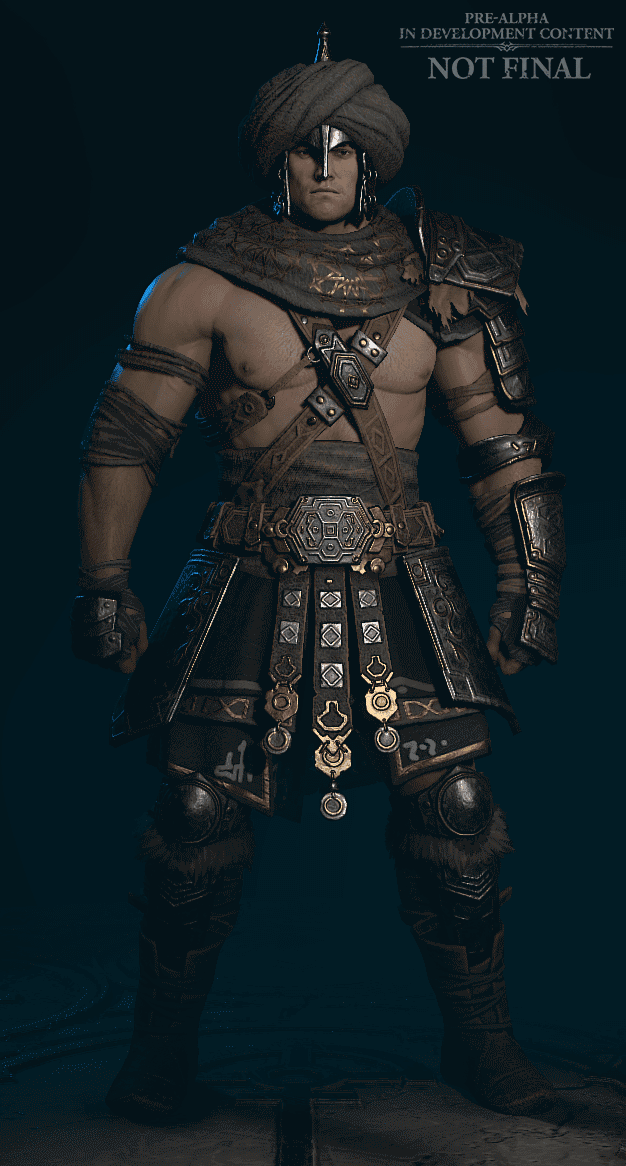

Our game design goal for the Blood Bishop was to make a caster who would cast direct damage and create AOE bombs for area of denial. As for the visual notes, we wanted a high-level boss based on vampiric blood and magic. We knew we wanted to double down on the notion of a heart shape for the function of the blood magic. That naturally led to the notion of arteries creating these blood clots that explode to cast the AOE effect design needs. An exposed beating heart was the natural visual choice. So, the organic pulsing we see, the flowing arteries, and the blood-based VFX all combined to reach an aligned goal the team could get behind. The success here is when the game design needs were met visually in a true Diablo way.
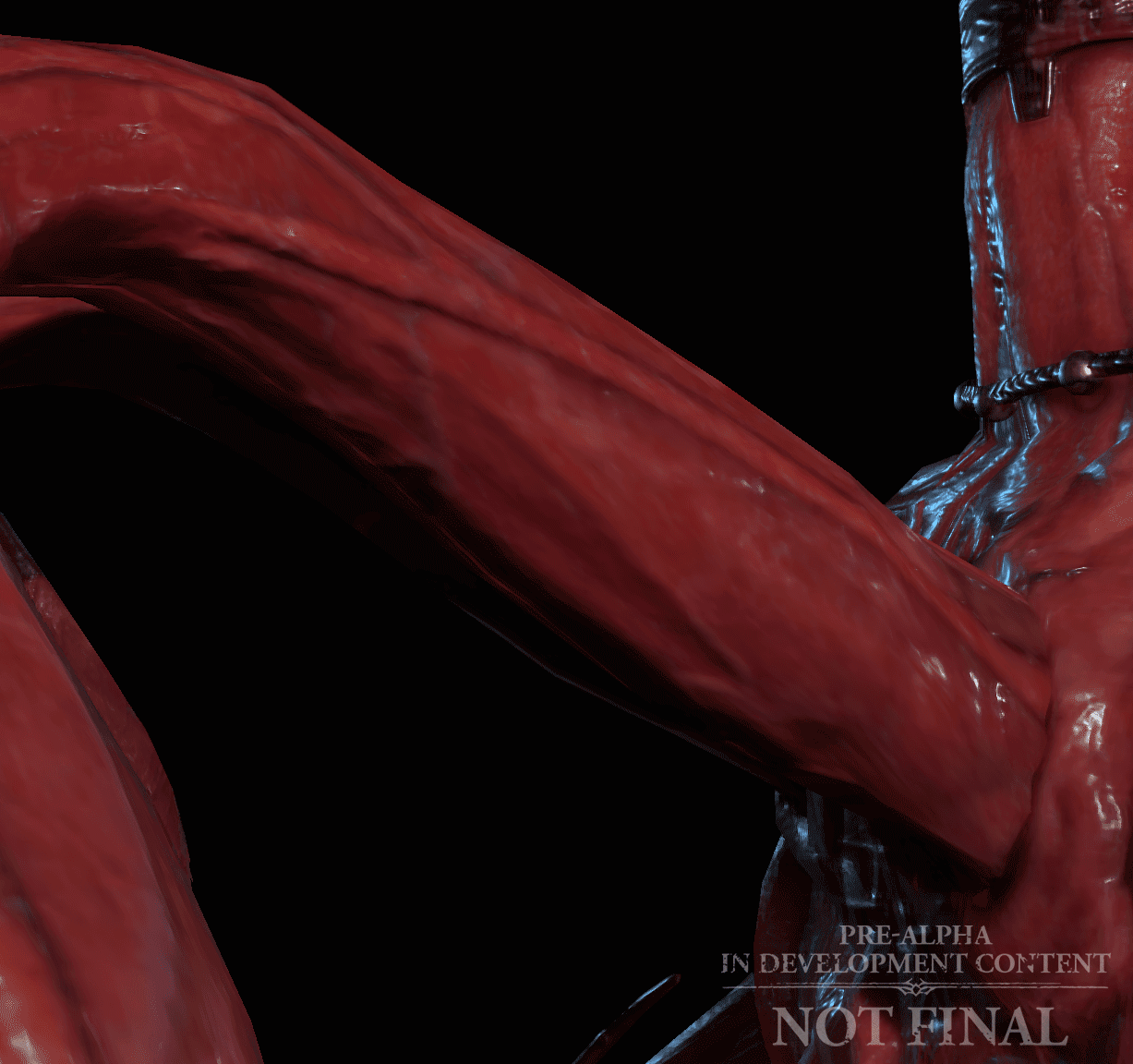
This undead Skeleton Lord is made of fused skeleton and body parts, with sinew and blood connecting it together—something we felt fit our game visually. That led to a Design Lead wanting to create a fight based on this character. The Design team was able to create a unique fight based on bone visuals, summoning skeletons, bone walls to restrict pathing, and leveraging the giant staff—one attack has the Skeleton Lord smashing the staff into the ground and creating a shower of exploding bone shards. Even though the art was created first, the Design team leveraged its look to help theme a fun and interesting fight we all enjoy.
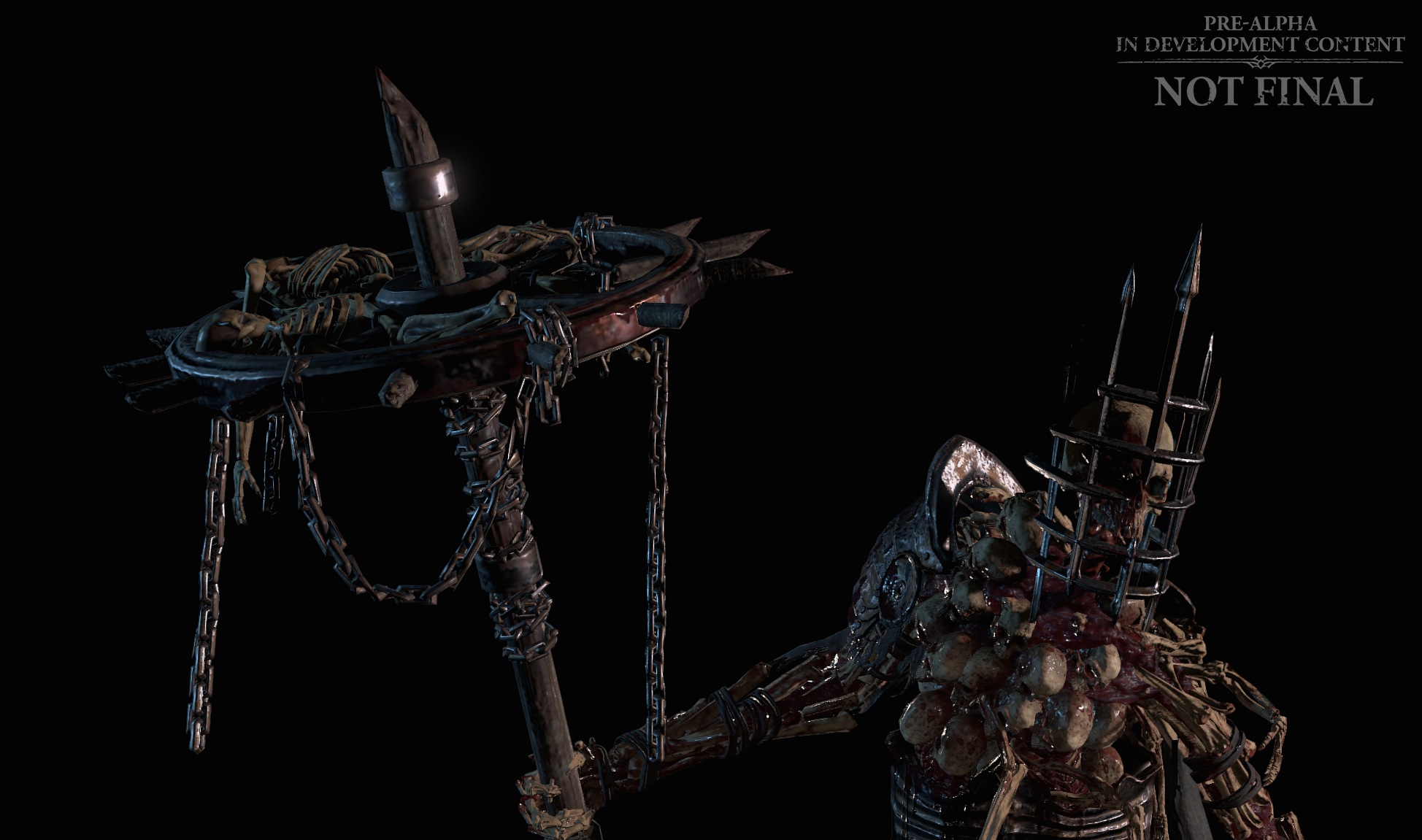
This succubus is another great example of an interesting and clear visual read from gameplay, with finer details that don't get in the way of the game camera but really raise the visual bar.
At the game camera we see a familiar silhouette. A winged demon hovering to seduce its prey and attack with magic from a distance. As you look closer, you see intricate details in the cloths, translucent skin on the wings, as well as materials like gold clasps, stitching, and embroidery on the outfit. We also see the wings are attached at the base of the head. A detail that needs a closer look to see but doesn't complicate the look from different cameras.
...tons more at link (too much to copy/paste)

As we transition back to a blog format, we will continue to spotlight different aspects of development. Today we're going to be focusing on Diablo IV character art—player characters, monsters, and allies.
Art is a critical part of what makes Diablo, well... Diablo. Our signature randomized dungeons would not feel like Diablo without the ominous lighting setting the mood as players uncover horrifying details around every dark corner. Combat only feels visceral thanks to carefully crafted animations and visual effects that make spells and abilities sing. And while stats might make or break an item, we often can't wait to get our hands on a piece of gear purely because of how incredible it looks.
Character art is equally important as it encompasses two of Diablo's key elements: classes and monsters. The look and feel of the classes has always been one of Diablo's secret ingredients, each class instantly recognizable and imbued with a strong and unique personality. Diablo IV offers players more customization options than ever in a Diablo game, which makes achieving that result more challenging, but the outcome is well worth it. Your Barbarian is different from anyone else's but still feels undeniably like a Barbarian. With monsters, the focus has been on creating new foes and updating classics drawn from the pantheon of atrocities in our previous games, while using new processes and technology to their fullest.

our goal was to make the characters in Diablo IV look as artistic and as hand-crafted as possible using the latest tools and techniques. Over time, our ambitions around what we thought we could achieve evolved and really solidified into what you see today. We wanted to use the latest tools and techniques, but we did have a concern about leaning into 'realism' in a way that wouldn't have that hand-crafted feeling we felt was fundamental to a Blizzard game. We didn't want the characters to feel procedural or generic because of these processes. We also embraced realism in terms of materials and character appearance. I think the touchpoint being the amazing pre-rendered look from the Diablo III cinematics. We loved those and it felt like a strong foundation to build upon in regards to the characters and achieving that warm quality that came through in the cinematics but in a real-time game environment.
That singular focus and commitment to quality led us down a very long, winding, and challenging path to where we are today. The challenges required us to completely rebuild our rendering engine and authoring tools. We needed to assemble a world-class character team comprised of artists, tools engineers, rigging specialists, lighting and surfacing experts. This was a complete overhaul.

We made massive improvements to the level of detail, the surfacing of complex materials like skin, cloth simulation, hair, fur, metal, even down to the details of the highlights of the eyes and rivulets of perspiration. We built a robust character customization system that is entirely new to Diablo and it was a daunting amount of technical character work. These solutions had to work not just for a single character, but for hundreds of componentized armor sets, different body types, dozens of unique personas, and completely unique art for five distinct classes (to start). This was an entirely new challenge for our team to tackle.
One of the benefits of the investments we've made in our character art development pipeline is that now most of our story cutscenes will be rendered in our engine using the game models. In previous Diablo games, the high fidelity cinematic story moments were all pre-rendered. We will still have those amazing cinematic moments from Blizzard Animation, but now we also have cinematic moments that feature your character up close, rendered in our game engine.
ARNAUD KOTELNIKOFF,
LEAD CHARACTER ARTIST
Diablo IV has more in-depth customization for your characters than we've had in any previous Diablo games. You will be able to change the face of your character, the hairstyle, the facial hair (beards and eyebrows), and add jewelry (nose piercing or earrings), makeup, and body markings such as tattoos or body paint. You will also be able to change the color values of your character's skin, eyes, hair/facial hair, and body markings. Some elements will be class specific, to support the classes' unique backgrounds, but many will be shared between classes allowing more possibilities to mix and match.
Dark Fantasy Meets Realism Through Physically-Based Rendering (PBR)
Diablo IV is intended to have a look that is grounded in reality, and to achieve that we need to follow some basic rules of color value, such as PBR, which means our materials look and react to light in a realistic way. The challenge for the 3D artists is to transfer the color of a concept drawing to a PBR value. For example, in PBR, silver is a very bright grey, almost white, and the reflection of the material makes it look darker. All the characters in Diablo IV follow the PBR rules, to ensure that our characters look as good in daylight as they do in a dark dungeon.Expanding the Dye System
Tools that empower players to customize the look of their characters help build a stronger connection to those characters and the game. Our dye system allows you to change the color palette of your armor pieces, such as changing silver to gold or replacing a white cloth for a black cloth, etc.Each part of the armor can be dyed, including the helmet, chest, gloves, legs, and boots. You can dye each piece with a different color palette if you choose, or apply the same palette to all of them.
This system was challenging to implement because materials such as metal do not allow themselves to be dyed with inappropriate colors when they follow PBR rules. To address this, we added data to our armor that identifies specific material types and tells the dye system what color goes on what material, such as leather, fabric, metal, and other specific surfaces. The result is armor that is dyable in a range of colors that still feeling grounded and realistic in the world we're building for Diablo IV.


NICK CHILANO,
ASSOCIATE ART DIRECTOR, CHARACTERS
With monsters, success requires that many different things come together, but it starts with the player feeling satisfied in killing it. That means the monster needs to visually match its gameplay and have a gory/demonic twist to it. They should look like something you have not seen before as well as taking something visually familiar and brushing it with a Diablo paint brush. That Diablo brush applies a level of detail, an understanding of gameplay needs, a level of artistry, and the demonic Diablo theme to all our monsters.Our game design goal for the Blood Bishop was to make a caster who would cast direct damage and create AOE bombs for area of denial. As for the visual notes, we wanted a high-level boss based on vampiric blood and magic. We knew we wanted to double down on the notion of a heart shape for the function of the blood magic. That naturally led to the notion of arteries creating these blood clots that explode to cast the AOE effect design needs. An exposed beating heart was the natural visual choice. So, the organic pulsing we see, the flowing arteries, and the blood-based VFX all combined to reach an aligned goal the team could get behind. The success here is when the game design needs were met visually in a true Diablo way.

The Skeleton Lord
This process was similar, but this time we had a visual concept to work from.This undead Skeleton Lord is made of fused skeleton and body parts, with sinew and blood connecting it together—something we felt fit our game visually. That led to a Design Lead wanting to create a fight based on this character. The Design team was able to create a unique fight based on bone visuals, summoning skeletons, bone walls to restrict pathing, and leveraging the giant staff—one attack has the Skeleton Lord smashing the staff into the ground and creating a shower of exploding bone shards. Even though the art was created first, the Design team leveraged its look to help theme a fun and interesting fight we all enjoy.

This succubus is another great example of an interesting and clear visual read from gameplay, with finer details that don't get in the way of the game camera but really raise the visual bar.
At the game camera we see a familiar silhouette. A winged demon hovering to seduce its prey and attack with magic from a distance. As you look closer, you see intricate details in the cloths, translucent skin on the wings, as well as materials like gold clasps, stitching, and embroidery on the outfit. We also see the wings are attached at the base of the head. A detail that needs a closer look to see but doesn't complicate the look from different cameras.
Last edited:


